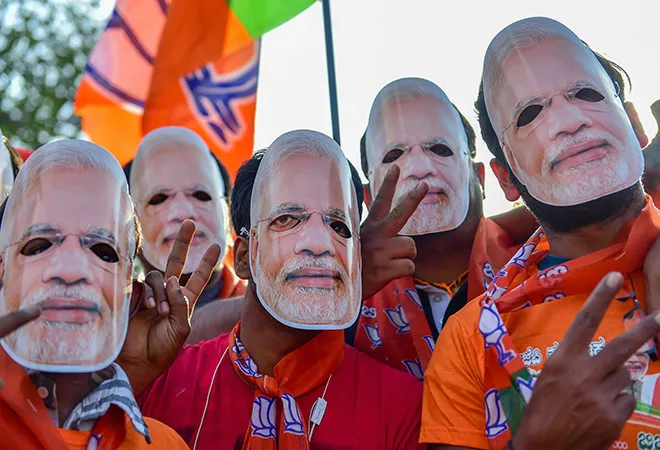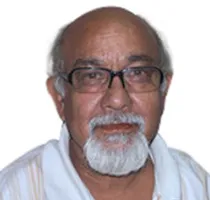
On 21 September, the Election Commission of India announced the schedule of assembly elections in Maharashtra and Haryana along with bypolls in 64 assembly seats in 18 states and one Lok Sabha constituency next month on 21 October, with counting of votes taking place on 24 October. In a way, the results of these elections are again going to be a test of Prime Minister Narendra Modi’s popularity, apart from being a vote for the performance/ achievements of the two BJP ruled governments of Maharashtra and Haryana.
Assembly byelections for 64 seats are going to be held in Arunachal Pradesh (1), Assam (4), Bihar (5), Chhattisgarh (1), Himachal Pradesh (2), Gujarat (4), Karnataka (15), Kerala (5), Madhya Pradesh (1), Meghalaya (1), Odisha (1), Punjab (4), Puducherry (1), Rajasthan (2), Sikkim (3), Tamil Nadu (2), Telangana (1) and Uttar Pradesh (11) where as the single Lok Sabha bypoll is going to be held in Samastipur constituency in Bihar.
Electoral contests on 21 October are going to be the first popular tests after the unprecedented victory of the BJP under the leadership of the Prime Minister in the general elections whose results were announced on 23 May this year.
The BJP, under the close supervision of Union Home Minister Amit Shah, has been readying itself for the elections for almost two months, holding rallies and making popular announcements.
Since assuming charge for the second term on 30 May, the Modi government has moved swiftly, criminalising triple talaq by enacting the Muslim Women (Protection of Rights on Marriage) Act, 2019. The Modi 2.0 has also scored a big political victory by getting Article 370 and Article 35A scrapped by the two houses of Parliament, thus ending the special status of the erstwhile state of Jammu & Kashmir. Now, the former state of J&K has been divided into the Union Territory of Ladakh, with no assembly like the Union Territory of Chandigarh and Jammu and Kashmir, which has an assembly.
The BJP, from all accounts, is the best placed in next month’s electoral battle. It is the richest political party in the country and has the largest membership pool as well. The BJP, under the close supervision of Union Home Minister Amit Shah, has been readying itself for the elections for almost two months, holding rallies and making popular announcements.
Only the economic slowdown, resulting in loss of jobs and receding profit margins of the industry and business, is part of the weaker points of the BJP and the Modi government. However, elections in India are not won or lost on economic performances; they are decided by emotions and sentiments.
The Shiv Sena and the BJP are currently involved in negotiations for contesting the elections in alliance, but both are trying to strike a hard bargain over the number of seats that each should contest.
In Maharashtra, Modi has already held a couple of rallies. Before embarking upon his US visit, the Prime Minister was in Nashik where, in his public address to mark Chief Minister Devendra Fadnavis’s Mahajanadesh Yatra, did not either mention or refer to the BJP’s ally Shiv Sena, thereby creating a bit of tension between the two. The BJP and the Shiv Sena had contested 2014 assembly elections separately with the BJP winning 122 seats and Shiv Sena romping home with only 63 seats in a 288-member strong assembly. The Shiv Sena and the BJP are currently involved in negotiations for contesting the elections in alliance, but both are trying to strike a hard bargain over the number of seats that each should contest.
The BJP is in a love-hate relationship with Shiv Sena, its oldest ally. The BJP had shown Shiv Sena the doors in 2014, with an argument that it is a senior partner that has grown in numbers across the country and also in Maharashtra, forcing the latter to contest alone. The State leadership is not willing to concede more than 117 seats to its biggest ally in the state while Shiv Sena supremo Uddhav Thackeray demanded 50 per cent of the total 288 seats. It is likely that the Shiv Sena will finally settle for around 125 seats.
In the northern state of Haryana, that neighbours the Union capital, the BJP has everything going in its favour with the opposition being totally out of tune with the changed political ground realities.
Their rivals, the Congress and the Nationalist Congress Party (NCP), had also fought the 2014 assembly battle separately. The two parties, which have ruled Maharashtra for decades, are in disarray with its leaders deserting their respective parties and joining the ruling BJP. The two have decided to fight the election in alliance. In 2014, the Congress had won 42 and the NCP 41 seats. The two are going to contest 125 seats each with 38 seats being offered to other parties that may decide to join the Congress-NCP front.
In the northern state of Haryana, that neighbours the Union capital, the BJP has everything going in its favour with the opposition being totally out of tune with the changed political ground realities. While the Congress is facing factional fights with two time former state chief minister Bhupinder Singh Hooda, who is leading the country’s oldest party into the battle. Former Pradesh Congress Committee chief Ashok Tanwar, who lost his Lok Sabha Sirsa seat in 2019 general elections, is playing the role of a spoiler by creating an image of a divided party in popular perception.
The other opposition party, the Indian National Lok Dal (INLD), that has given two chief ministers to the state, is equally in shambles because it has been split into two factions because of political rivalries within the Chautala family that draws its lineage from former Deputy Prime Minister and two times Chief Minister of the State, Chaudhary Devi Lal. Lal’s son Om Prakash Chautala, went on to inherit the political legacy from his father. Om Prakash Chautala also remained the chief minister of the state four times. Out of the four times that he came to occupy the chief minister chair, Chautala could complete the full five years term only once, from 24 July 1999 to 4 March 2004, while on other three occasions he was on the chair only for a few weeks or months.
Notwithstanding, the BJP’s decisive edge in the elections, the opposition’s performance and the polling percentage of each political party will show the political realities on the ground, which will in turn determine the contours of politics for the coming years.
The views expressed above belong to the author(s). ORF research and analyses now available on Telegram! Click here to access our curated content — blogs, longforms and interviews.




 PREV
PREV


